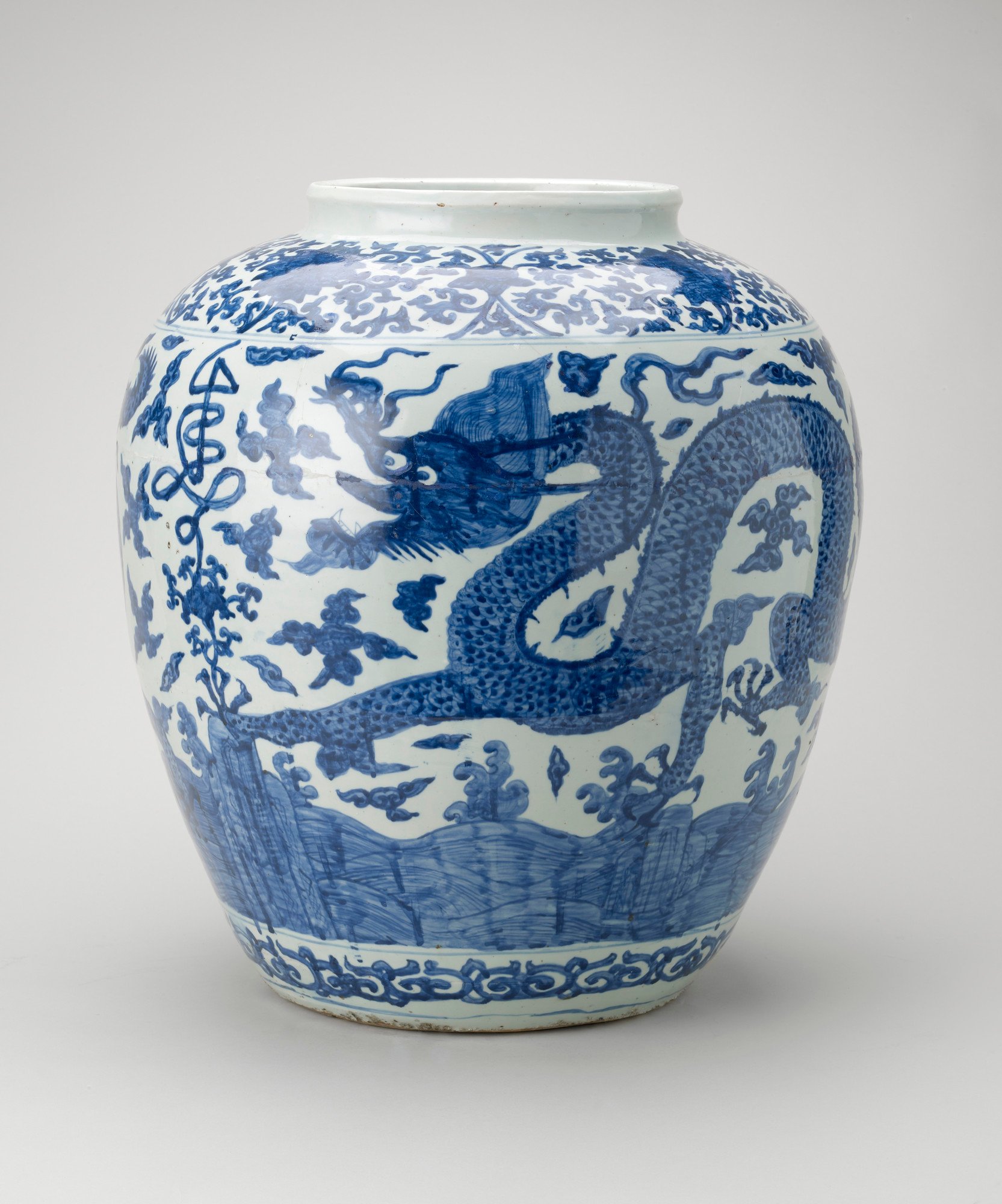
Extraordinary Chinese and Japanese Works of Art in the Royal Collection
The History of the Collection
Exotic Rarities
For many centuries, the secret of 'true' hard-paste porcelain manufacture was known only in China. As a result, porcelain wares were considered highly exotic and valuable in the West. These sought-after goods were transported to Europe, first by Indian and Arab traders and later by the Dutch and English East India Companies, who carried their wares by sea. As the flow of products from the East increased, Chinese and Japanese wares were soon used to decorate great houses and palaces, a practice that has never since been out of fashion.
Henry VIII (1491–1547) is the first English sovereign known to have owned porcelain. After his death in 1547, a number of 'purselyn', 'pur-selyne' and 'Pursulane' items were listed in the inventory of his possessions. The taste for these goods grew among the wealthy in England during the reign of his daughter, Elizabeth I (1533–1603), when items from the East were prized for their exoticism and rarity. As European demand increased, James I (1566–1625) actively supported the newly-founded East India Company in a bid to compete for valuable trade with the East. However, most of the Chinese and Japanese wares added to the Royal Collection at this time were sold or lost during the Civil War.
Decorative Display
By the late seventeenth century, Asian arts were being acquired not as individual curiosities but for larger decorative displays. One of the most devoted early collectors of porcelain was Mary II (1662–94). She amassed a wealth of Chinese blue-and-white and blanc de Chine (white) porcelain for her apartments at Kensington Palace and Hampton Court Palace. The pieces were displayed there according to the latest fashion, in rooms lined with panels of Eastern lacquer and mirrors, and with carved wall brackets to hold the porcelain above mantelpieces and doors. The writer, Daniel Defoe (c.1660–1731), recorded seeing china piled 'upon the Tops of Cabinets, Scrutores [desks], and every Chymney-Piece, to the Tops of the Ceilings'.
As interaction with the East increased in the late eighteenth century, early diplomatic contact gave rise to new exchanges of works of art. Some of the finest pieces in the Collection today were sent to George III (1738–1820) by the Qianlong Emperor (r.1736–95). The king had dispatched an Embassy to China in 1792 in the hope of securing more favourable trade agreements, but it returned instead with a variety of rich and unusual gifts – including porcelains, lacquer wares, jades and silks. This proved the first of many exchanges of outstanding works of art between Chinese and Japanese rulers and British monarchs.
For George IV (1762–1830) Asian wares were integral to a succession of large and increasingly lavish interior decorative schemes. Over a period of 30 years he adapted and furnished a number of residences in the romantic Eastern style. Carlton House, his home when Prince of Wales, was decked with hanging bells, lanterns and painted figure scenes. At the Royal Pavilion, Brighton, an elaborate design scheme of Chinese wallpapers, porcelain pagodas and original bamboo furniture later created an exotic atmosphere in the principal rooms. In addition to these expensive decorative projects, George IV was also responsible for acquiring much of the gilt-bronze-mounted porcelain in the Collection.
Gifts, Visits and Connoisseurship
During Queen Victoria's reign, many of the finest Eastern works of art from the Royal Pavilion were transferred to the new East Front of Buckingham Palace, which had been built to accommodate her growing family. Several of her children and grandchildren went on to travel to the Far East in person, where they acquired further pieces for the Collection, and the queen also received several important works of art as gifts on her Golden and Diamond Jubilees.
In the twentieth century it was Queen Mary (1867–1953), consort of George V (1865–1936), who showed the strongest interest in the arts of the East. At Buckingham Palace she created a Japanese Room, a Lacquer Room and a Chinese Chippendale Room, where she catalogued and displayed her notable collection of jade and hardstone carvings. Queen Elizabeth The Queen Mother (1900–2002) also acquired an important group of antique jars and eighteenth-century porcelain animals.
Click on an object below to learn more about how the collection has been acquired and displayed.




